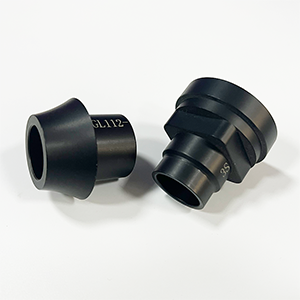Hey, curiosity! Today we will enter the fascinating world of CNC machining. Now, I know what you are thinking – “What exactly is CNC machining?” Trust me, if you have never been to a factory, this concept may seem like a jigsaw puzzle waiting to be solved. But have no fear, because I’m here to unravel the mystery and make everything clear.
When initiating a CNC system, programmed cuts are inputted into the software and communicated to the corresponding tools and machinery, functioning akin to a robotic system. In CNC programming, the code generator in the numerical system assumes flawless mechanisms, although errors may occur, especially when directing the CNC machine to cut in multiple directions simultaneously. The tool’s placement in the numerical control system is defined by a set of inputs known as the part program.
In numerical control machines, programs were traditionally inputted via punch cards, while CNC machines use small keyboards to feed programs into computers. CNC programming is stored in a computer’s memory, and programmers are responsible for writing and editing the code. CNC systems provide extensive computational capacity and are dynamic, allowing the addition of new prompts to existing programs through revised code.
Varieties of CNC Machines:
CNC Mills: Guided by G-code, CNC mills operate on a three-axis system, with newer models accommodating additional axes for versatile machining.
Lathes: CNC lathes ensure precise circular cuts, following G-code or proprietary code with a focus on two axes (X, Z).
Plasma Cutters: Utilizing plasma torches, these machines cut metals through high-pressure applications, generating the required speed and heat.
Electric Discharge Machines (EDM): Wire EDM and sinker EDM mold workpieces with electrical sparks, offering efficient material removal and shaping.
Water Jet Cutters: Water jets, sometimes with abrasives, cut hard materials like granite and metal using high-pressure applications, commonly employed for shaping machine parts.
 These stunning products showcased in the images are the epitome of precision and craftsmanship, masterfully brought to life through the artistry of CNC technology. The intricate details, flawless contours, and exquisite aesthetics are a testament to the capabilities of CNC machining. Beyond their visual appeal, CNC technology ensures unparalleled precision, efficiency, and adaptability in manufacturing processes, making each product a shining example of the seamless integration of technology and artistry.
These stunning products showcased in the images are the epitome of precision and craftsmanship, masterfully brought to life through the artistry of CNC technology. The intricate details, flawless contours, and exquisite aesthetics are a testament to the capabilities of CNC machining. Beyond their visual appeal, CNC technology ensures unparalleled precision, efficiency, and adaptability in manufacturing processes, making each product a shining example of the seamless integration of technology and artistry.

So the next time someone asks you a question about CNC machining, you can confidently say that it’s like having a master craftsman at your service, ready to turn your vision into reality with unparalleled precision. Who knows, maybe you’ll even find yourself longing to visit a factory just to witness this fascinating process first-hand.